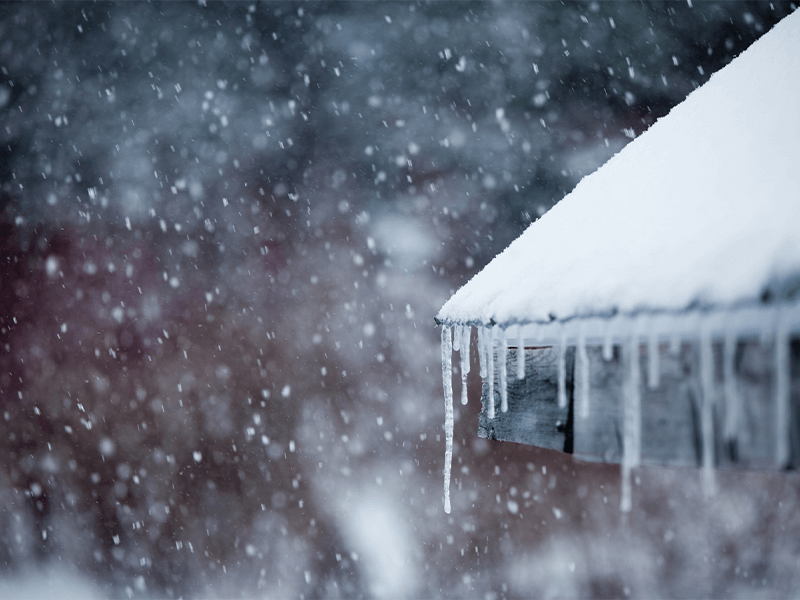
Your roof is your home’s first line of defense against the elements, but weather can take a serious toll on its durability over time. From intense sun and heavy rains to high winds and freezing temperatures, different weather conditions can lead to wear, damage, and costly repairs if left unchecked. Knowing how the weather affects your roof and what signs to watch for can help you protect your home and avoid more serious issues down the road.
How Weather Impacts Your Roof
Weather can have a big impact on your roof. Heavy rain, hail, and snow can cause water to seep through, damaging the roof over time. It’s important to watch for signs of leaks or moisture that could weaken the roof’s structure.
Strong sunlight and UV rays can make roofing materials crack and become brittle. This reduces the roof’s ability to protect your home. Using materials designed for your climate can help prevent this problem.
High winds can also loosen or remove shingles or tiles, leaving gaps where water and debris can get in. After strong winds, it’s a good idea to check your roof for damage to keep it in good shape.
Meanwhile, rapid temperature changes, known as thermal shock, can cause roofing materials to expand and shrink, making them weaker. Choosing the right materials is especially important in areas with sudden or extreme temperature shifts.
Common Weather Events and Their Effects
Heavy rain can strain a roof, causing leaks and water damage if the roof isn’t well-maintained. Make sure your roof has proper drainage to stop water from pooling, which can weaken the structure and lead to leaks.
Hailstorms can damage shingles by cracking or denting them, leaving the roof exposed to further problems. After a hailstorm, check your roof carefully and fix any issues you find.
Snow and ice can also add a lot of weight to a roof, which may cause it to weaken or collapse. In areas with frequent snowfall, ensure to keep an eye on snow buildup and consider using snow guards to reduce the risk.
Extreme heat and constant sun exposure can wear out roofing materials faster. Using UV-resistant materials or reflective coatings can help protect your roof and extend its lifespan in hot, sunny climates.
Warning Signs of Weather Damage
Stains or discoloration on ceilings and walls can indicate that the roof has been damaged and moisture is getting inside. Don’t ignore these signs—they usually mean the roof needs inspection and repair right away.
Missing, cracked, or curled shingles show weather-related wear and tear. Check your shingles regularly and fix any damage to avoid bigger problems later.
A sagging roof or noticeable dip can point to structural damage caused by heavy snow or water buildup. This kind of issue needs immediate attention to prevent safety risks and further damage.
More so, granules in gutters or downspouts often come from shingles wearing down due to hail or heavy rain. This reduces the roof’s durability, so it’s important to have a professional take a closer look.
Preventative Measures and Maintenance Tips
Regular roof inspections are key to spotting and fixing small problems before they become major ones. Check your roof twice a year to keep it in good condition and ensure it lasts longer.
Keeping gutters and downspouts clean also helps prevent water damage to your roof. Remove debris regularly so water flows properly and doesn’t pool on the roof.
Additionally, choosing roofing materials suited to your climate can help protect against weather damage. Talk to a roofing expert to find materials that resist UV rays, moisture, and temperature changes, making your roof more durable.
Trimming trees near your home also lowers the risk of branches falling on the roof during storms. Plus, it reduces debris buildup, which can trap moisture and cause damage.
When to Call a Professional Roofer
Call a professional roofer if you see visible damage like missing shingles or major leaks after bad weather. They can inspect the roof thoroughly and recommend repairs to fix the problem.
If you notice granules in your gutters or downspouts, it’s a sign that shingles are wearing out. A roofer can assess the damage and suggest the right solution.
If your roof is nearing the end of its expected lifespan, especially after severe weather, get a professional evaluation. They can advise you on how much life the roof has left and what issues to expect.
Structural issues like sagging or a dipping roofline too need immediate attention from a professional. Roofers can identify the cause and make repairs to strengthen the roof and keep your home safe.
Contact Apex Roofing Today!
Protecting your roof from weather-related damage starts with understanding the risks and acting early. At Apex Roofing, we specialize in delivering tailored roofing solutions to meet your unique needs, backed by years of industry experience. Contact us today for expert inspections, repairs, and maintenance that keep your home protected all year round.
